Everything has its season. Life is a never-ending cycle of low points that turn into high points, only to revert backagain to lows. The lowest points on life's cosmic wheel serve as mere introductions to enhance the next stage of highs.
Every day, we experience night for sleeping, only to waken to the energy and vitality of day. We work during the mundane six days of the week, and then restfully bask in the holiness of Shabbat. The winter season ushers in coldness, barrenness, and lifelessness, while the summer warms, rejuvenates, and invigorates.
In Metzorah, we are introduced to the halachic terms of tumah and taharah. Some of these lows and highs of life can be defined by these terms. Loosely translated, tumah means impurity, and taharah means purity. Nonetheless, these terms have nothing to do with physical cleanliness, but are wholly spiritual concepts.
Tumah would more correctly be defined as an absence of holiness, while taharah would mean a state of readiness to receive, or be imbued with, holiness. Though sometimes tumah can be caused intentionally by sinning and pushing G‑d away from one's life, many forms of tumah are inherent in the rhythm of life itself, and have no association with sin, or negativity, at all.
Thus, the
severest source of tumah is a corpse.
Bereft of its soul to provide holiness and vitality, the body remains in a
state of empti
yness, and,
therefore, in a state of impurity. Anyone coming in contact with a dead body
is, likewise, considered ritually impure.
Similarly, during sleep, the soul temporarily leaves the body to ascend on high (therefore sleep is considered one sixtieth of death). Upon awakening, the hands, the medium through which the soul departs, are considered tameh, until they are ritually washed. Though the hands are not dirty, they must be purified since the body experienced a lack of kedusha, holiness.
For this reason, as well, many men have the custom to ritually immerse in a mikvah (special pool of water) prior to Shabbat (and are actually mandated to do so prior to Yom Tov) in order to purify themselves for the extra holiness of these holy days. Many Chassidim will likewise immerse daily, before the morning prayers as a preparation for the forthcoming state of holiness, inherent in communicating with G‑d.
A convert to Judaism will also ritually immerse to mark his or her new status as someone who will now fulfill Divine precepts.
Furthermore, G‑d promises that in the era of redemption, “I will sprinkle you with tahor waters,” and “I will remove the spirit of tumah from the land.” (Zach. 13:2) This will be accomplished metaphorically through our immersion into the “knowledge of G‑d” that will suffuse creation “like water covers the sea bed.”(Isa. 11:9)
The ultimate purpose of tumah, or of any concealment of G‑d's revelation—a low on life's cosmic wheel—is to achieve a higher level, by transforming it. The lows provide us with the opportunity to turn life's wheel, thus effecting an elevation.
Thus, each of these descents is a preparation for the ultimate ascent. The real purpose of the descent is, in fact, the ascent. Therefore, though the lows externally appear to be a descent, internally, they are a real part of the ascent itself. For the bottom of life's cosmic wheel is a harbinger of the top, and thus, not only affect the topmost part, but is an integral part of it.
Sleep furnishes strength for the hours of wakefulness. Winter hibernation provides for the coming spring's vitality. The weekdays supply the framework for change, development, and creativity so that we can absorb the blessing, serenity, and peace on the Shabbat. In the words of the Talmud, “He who toils on the Eve of Shabbat, shall eat on the Shabbat.” (Avodah Zara 3a.)
Similarly, throughout the millennia of exile, we have had the opportunity to uproot the evil surrounding us, so that we can attain the Era of Redemption, when we will nurture the inherent good and reveal the Divine Essence of creation.
A woman's status of tumah during her menstruation is also a built-in component of her natural monthly cycle. Her status of tumah demonstrates her descent from a peak level of kedusha when she has the ability to conceive a new life through her union with her husband.
“And if a woman has an issue, and her issue in her flesh is blood, she shall be seven days in her menstrual separation.” (Lev. 15:19)
The Talmud comments (Niddah 31a): Why did the Torah ordain that the tumah of menstruation should continue for seven days? Because being in constant contact with his wife, a man might develop indifference towards her. The Torah therefore ordained: Let her be in a state of tumah for seven days, in order that she shall be as beloved by her husband as at the time that she first entered into the bridal chamber.
Her status of tumah is not meant to imply sinfulness, degradation, or inferiority. On the contrary, it emphasizes the great level of holiness inherent in woman's G‑dly power to create and nurture a new life within her body. It also underlines the great holiness of a husband and wife's union. Since only a woman possesses this lofty potential, she, also bears the possibility of its void; hence her status as tameh. She experienced “the touch of death,” so to speak, with the loss of potential life, as reflected by her menstruation.
(Perhaps this explains why after having given birth to a baby boy, a woman must wait a minimum of seven days before beginning her pure days count; while after a baby girl is born, she must wait a minimum of fourteen days. Since the female child inherently carries a higher degree of holiness, due to her own biological, life creating capability, a greater void, or tumah, remains after her birth. Thus, the greater tumah after a baby girl's birth reflects her greater capacity for kedusha (due to her creative powers) and necessitates the longer wait to remove this tumah.)
Through the natural rhythms of her body, every month a woman experiences her wondrous G‑dly power to create.














Join the Discussion